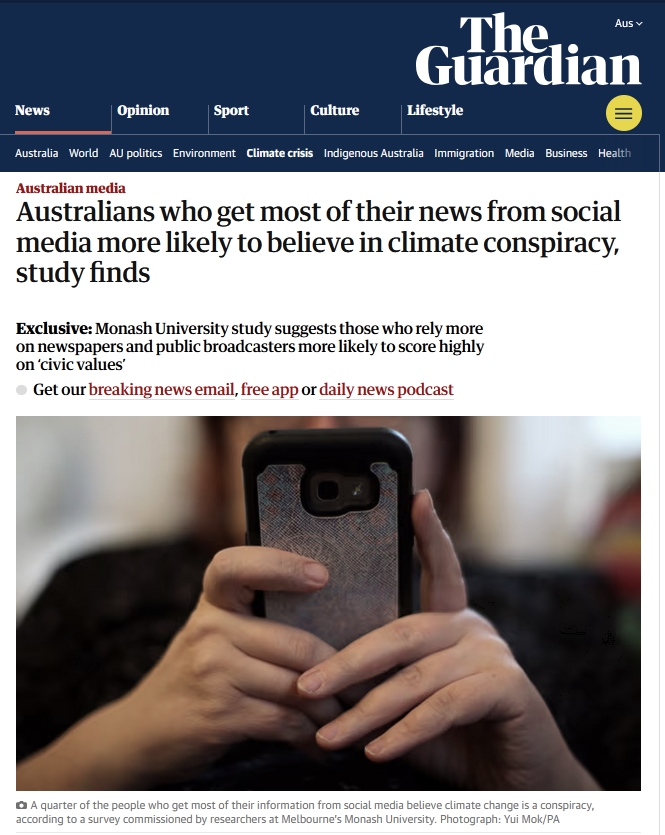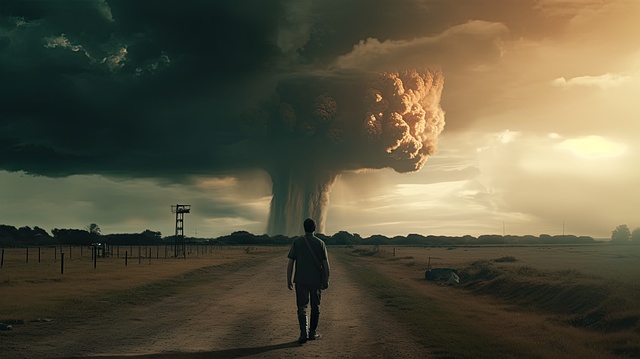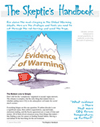|
|
||||
|
By Jo Nova The Blob are afraid they will lose even more followers to social media…Academics and the old dying media have produced a study that “shows” people who believe social media posts are bad people. The message here for believers is that only horrible people get their news from sites like X or TikTok. Those selfish people score badly on civic values. The trick in this “peer reviewed” propaganda is how they define civic values. You might think it means checking on elderly neighbors, donating to charity, or volunteering at the Scouts, but actually “Civic values were defined as an individual’s belief in democratic institutions “. So if you question parliament or universities you are not a good citizen. The institutions are sacred! This transparent paper is just a get-out-of-jail free card for sloppy, self serving academics. Mike Benz warned us that the Blob redefined “democracy” as “democratic institutions” in 2016, which meant people could be tarred with the “anti-democratic” brush if they criticized the “essential institutions” of democracy, like elections, insurrections, vaccines, or senile Presidents. The left destroy the meaning of words to deceive their flock. The right let them get away with it. Australians who get most of their news from social media more likely to believe in climate conspiracy, study findsAmanda Meade, The Guardian Those who believe global heating is a conspiracy get most of their information about news and current events from commercial and social media, according to a study by researchers at Monash University. The study, led by Prof Mark Andrejevic and Assoc Prof Zala Volcic, found that those who relied on social media as the main source of news scored lower on a measure of “civic values” than people who relied on newspapers and non-commercial media. Civic values were defined as an individual’s belief in democratic institutions and practices, as well as their openness to considering perspectives that challenged their own. Of course, having redefined “civic values” they can also define “conspiracies” any way they want. Even if a Nobel Prize winner is not convinced about a wild hypothesis invented by B-Grade modelers, just call it a conspiracy… For the climate change question, researchers asked whether “fluctuations in the climate are the result of natural cycles that take place regardless of human activity”. Of those who got most of their news from commercial TV and radio, 37% agreed with the statement. Of those who got most of their information from social media, 25% believed climate change was a conspiracy. To rephrase, nearly 40% of the people said climate fluctuation is natural, which presumably the team at Monash would call a “conspiracy”. The Sun colludes with the moon-wolf or something. But the social purity of the ABC radio audience is 98%. These publicly funded “journalists” are practically offering hypnosis. Obviously they never present both sides of the story. If they did that, the ABC audience would form more a bell curve of opinions, rather than a religious believer 98:2 split. Conversely, those who disbelieved in conspiracies about climate change were more likely to get their information from public broadcasters ABC and SBS. Only 2% of those whose main source of information was public radio and 6% of those whose main source was public television believed the climate crisis was a conspiracy. So 98% of public radio listeners all think the same thing on a complex topic, and this is supposed to be a sign of a healthy democracy? But the good news is that 60% of Australians mainly get their news from social media sources. No wonder the Blob is aquiver. Only 34% got their news from Channel Seven, Nine and Ten, and just 6% got it from ABC or SBS public broadcasters.
REFERENCE
By Jo Nova The dam has brokenTrump has only been President for a week, and already policies on the far side of the world are shifting. Just like that, the European Union has realized they might have too many green regulations. It’s only a “leaked draft” of a five year economic plan — but the favored hyperbolic term du jour “unprecedented” now applies to deregulation, not climate change: ““This Commission will deliver an unprecedented simplification effort…”. And apparently, next months unprecedented effort is just the first round of simplifications. The draft document says they need to adapt to “new realities” — like possibly that the US economy is about to unshackle itself from the Net Zero ball-and-chain-fantasy and eclipse the EU. EU’s new economic vision is speaking to Green Deal criticsA draft document shows Brussels putting deregulation before decarbonization. Zia Weise, Politico BRUSSELS — The European Union’s new economic “compass” has a north star the burgeoning movement to revoke stringent green rules will love. A leaked draft of the European Commission’s competitiveness compass — an economic doctrine to guide the EU executive’s work for the coming five years — points toward widespread deregulation targeting the European Green Deal in particular. Naturally, the EU will “stay the course” on its climate targets (that’s what they all say, as they back away). But the Polish Prime Minister Donald Tusk demanded a “full and critical” review of the EU’s Green Deal last week and laid the cards out about as bluntly as anyone could: “If we go bankrupt no-one will care about the world’s environment any more,” Tusk said, calling for an honest, full and “very critical review of all regulations, including those arising from the Green Deal”. Tusk wants any review to identify and change EU laws that may lead to higher energy prices. “There is, for example, the issue of ETS 2 in front of us,” he said, singling out the separate trading system covering emissions from road transport and heating fuels, which is scheduled to launch in 2027. — EU must be honest about Green Deal — The Argus Unthinkably, Tusk even appeared to suggest that the Green Deal had caused high energy prices: He called for a “review of all legal acts including those under the Green Deal” and for “courage to change those rules that might result in prohibitively high energy prices,” attacking, in particular, a carbon fee on fossil fuels used to heat homes and power cars coming into force in 2027. — Politico France is also asking the EU to delay the corporate sustainability rules. The French “far-right” (sensible) Jordan Bardella wants to “tear down the European Green Deal”. He is urging conservative parties to work together to kill off the Green Deal altogether. In the end Trump may kill Green movements all over the world, not by invading, but through free speech, capitalism and competition. That’s why they hate him so much. The whole levitating fantasy of global weather control could only be maintained if every other western nation kept up the Cosplay game. Hat tip to Tallbloke.
I’ll be back soon…
Happy Australia Day Taking a few days off… By Jo Nova Skeptics have been waiting for this for yearsOn day one Donald Trump has pulled out of the Paris Agreement. He’s abandoned the WHO, rescinded 78 executive orders made by Joe Biden, and freed 1,500 political prisoners who came to the Capitol to protest 4 years ago. He declared a National Energy Emergency and removed the EV sales target (the 50 percent zero-emission new vehicle sales by the end of the decade). He has vowed to disassemble the vast Inflation Reduction Act which was a monster Green Climate Fund. 100,000 pointless climate grifter careers have just been extinguished. For four long tortuous years he was treated like a criminal, derided and mocked, and even shot. He must surely have been planning this day in intricate detail. If it bugged him, he put it on the list, even to the point of renaming the Gulf of Mexico to the Gulf of America and reversing Denali back to Mount McKinley. There are already reports of the State of Florida issuing notices about a storm in the Gulf of America. An Overview Of Trump’s Day One Executive ActionsZeroHedge “The United States will not sabotage our own industries while China pollutes with impunity,” Trump said at the Capital One Arena. “You know, China, they use a lot of ‘dirty’ energy, but they produce a lot of energy and when that stuff goes up in the air, you know, [it] doesn’t stay there … it floats into the United States of America,” he said. It is difficult to “fight for cleaner air” when “dirty air is dropping all over us,” Trump said. “Unless everybody does it, it just doesn’t work.” Withdrawing from the climate pact will save taxpayers $1 trillion, the White House said. First things, first — free speech is back:Trump issued an executive order against government censorship, which he vowed would “bring back free speech to America.” “Never again will the immense power of the state be weaponized to persecute political opponents, something I know something about,” Trump said in his inaugural address. The executive order establishes as policy that federal employees cannot restrain American citizens’ free speech or use money from taxpayers to that end. And he will settle the score: It also directs the attorney general to prepare a report to address abuses against Americans’ free speech under the Biden administration Furthermore he signed an order demanding all agencies preserve their records “related to political persecutions.” He signed an executive order on the weaponization of government and has asked the attorney general to investigate abuses… The 51 former intelligence officials who interfered in the 2020 election with a fake story to cover for Hunter Biden’s bombshell laptop — have already lost their security clearances. It’s been a blockbuster day that will be talked about for years. Already there are calls for the Australian opposition leader to get us out of Paris too. —————————– Apologies, I am away from the desk alas and will be taking a few days off… By Jo Nova Let the Swamp Drain…For all its flaws, the US is still the largest military force on the planet and the world’s largest economy. If Trump chooses to use that power, and he appears to want to, the draining will be global. The only question is “how much”? The Pre-inauguration Victory Rally
Missed another bulletLet’s not forget how close it was. As truly awful as the Kamala word-salad was, she still allegedly got 71 million votes compared to Trump’s 75 million. And if a mere 30,000 voters in Wisconsin, 80,000 in Michigan, and 120,000 in Pennsylvania had voted differently or been ballot harvested more efficiently, or were electronically hacked more competently, Kamala would have won. (270 Electoral college votes to 268). The fate of the nation of 147 million voters (and the West) depended on just 230,000 choices or 0.16%. If the Blob had picked even a slightly less incompetent candidate, one without full blown dementia, or one able to string a whole coherent sentence together, then the advantages of state loving media, state directed tech censorship, mass immigration, electronic machines in 28 (or so) states and no voter ID would presumably have won the day. Or if Elon Musk had not jumped all in, and spent $44 billion dollars for X… Hopefully major election reform starts today. Who, exactly, was in charge of 3,748 Nuclear Warheads?When Mike Johnson got to meet President Biden he found out that Biden had no idea he had signed an EO to pause LNG exports to Europe. And Joe Biden was stunned… Wall Street Apes (@WallStreetApes) says: Does everyone realize what was just said here? Speaker Mike Johnson not only confirms that Joe Biden isn’t in control and signing executive orders he doesn’t understand but that to meet with Biden, The CIA Director had to be present. He just confirmed The CIA is running our country, not the president. This just confirmed another “conspiracy theory.
UPDATE: Brett Moulton points out Mike Johnson [Speaker of the House] had every legal ability to hold Biden accountable and did nothing. He could have brought forth impeachment hearings and even removed Biden from office. And the announcements start:
Watch the Inauguration Ceremony live:
By Jo Nova Ponder the remarkable physics SpaceX just launched Starship Flight Test 7. As Elon Musk says about the booster section: “Atmospheric reentry speed is more than twice as fast as a bullet from an assault rifle and this is the largest flying object ever made“. Yet they still manage a perfect catch. The top speed on the return of the booster was 4,135 km/h. It went to space and back in just 7 minutes, reaching 90 km up. The unmanned test rocket though, wasn’t so lucky, as SpaceX described it, suffering a ‘rapid unscheduled disassembly during its ascent’. The launch itself is a spectacle of raw power. As the rocket lifts off, it is so powerful it appears to create the weather around it almost, tearing through the atmosphere. Elon explains: “You can see the much higher propellant mass fraction of the new ship design by the percentage of rocket that is frosty.”
One commenter said SpaceX will change the way we fly. Elon said “Yes”. Imagine being able to fly anywhere in the world in under an hour…
It’s a strange moment in history. So much corruption and graft, yet also something extraordinary…
A “Far Left Politician” is practically invisible, and usually harmless. But a Far Right politician is dangerous. (To the people who use namecalling to silence opponents).
To be called “Far Right” implies someone is a horrible person, and you should probably hiss at them if they get too close. But on the prime time news, even bureaucrats pushing for One World Government, or slave owning dictators like President Xi are rarely introduced as “the Far Left President Xi”. That would give the game away, wouldn’t it? There would be constant reminders of the dangers of going “too far left”. In its purest form the political right just want individual rights and smaller government, yet the “definition” of far right keeps shape-shifting to become somehow horribly authoritarian, “like Hitler”, of course, (the Socialist). Who benefits from this absurd definition? — Big Leftist collectivists, of course. We the people cannot even have a conversation with easily recognizable words. The word fog is not an accident. The real horrors are not the right wing people waving a national flag, and talking about individual rights, but the far left committees in Brussels or Davos that want to take your money, inject you, tell you what you can say, and take away a medicine that might save your life. Namecalling is a powerful tool.
|
||||
|
Copyright © 2025 JoNova - All Rights Reserved |
||||
















Recent Comments